Showcase Highlights Exemplary Undergraduate Student Research
Research experience is an integral part of advanced undergraduate education, especially for students planning to enter graduate school. In Northwestern Computer Science (CS), undergraduate students have ample and varied opportunities for conducting practical research in labs alongside graduate students and faculty members.
On May 3, Northwestern CS invited six undergraduate students to present their exemplary contributions to new knowledge during the annual Undergraduate Research Showcase.
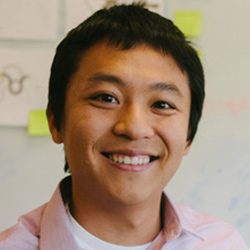
“It’s wonderful to see our undergraduates coming together to share the wonderful research work that they themselves led, across a wide variety of research areas in Computer Science ,” said Zhang, director of the Design, Technology, and Research (DTR) learning initiative through Northwestern CS and the Segal Design Institute, and codirector of the Delta Lab.
Angela Davis
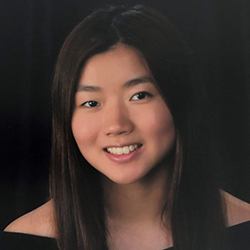
Despite the prevalent nature of social media in modern society, many forms of online entertainment remain inaccessible for individuals with photosensitive epilepsy, a condition in which certain visual elements, such as a GIF with flash, may induce seizures and/or other adverse symptoms.
To aid in the development of crowdsourcing tools as a potential solution, Davis aimed to determine how accurate the average person is in determining whether visual triggers are present in a piece of media and compare this accuracy with machine algorithms, which are computationally expensive. Davis surveyed 50 participants using 20 randomly selected GIFs and asked the participants to indicate whether a visual trigger had appeared. The study provided valuable information related to the strengths and weaknesses of human identification of visual triggers.
Davis is advised by Maia Jacobs, Lisa Wissner-Slivka and Benjamin Slivka Professor of Computer Science at Northwestern Engineering and assistant professor of preventive medicine at Northwestern’s Feinberg School of Medicine. Jacobs is also the director of the NU-PATH Lab.
Amil Dravid
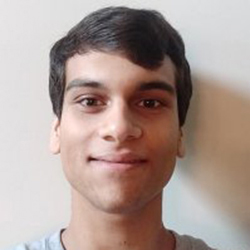
Generative models in artificial intelligence (AI) use training data to create new artifacts such as images or text combinations. Dravid explores how generative models can be designed and leveraged to understand physical phenomena and structures present in the natural world. Humans could then utilize this information for a range of applications from medicine to behavioral neuroscience.
Dravid discussed an algorithm for visually explaining the decision-making processes of AI-enabled disease diagnosis systems which can aid clinicians by analyzing medical images. He also presented a method for automatically extracting 3D skeletal information from videos of animals and humans, which has the potential to accelerate progress in many domains, including behavioral neuroscience, kinesiology, and autonomous navigation.
The work was performed in collaboration with adviser Aggelos Katsaggelos, Joseph Cummings Professor of Electrical and Computer Engineering and (by courtesy) computer science at Northwestern Engineering.
Bob Guo
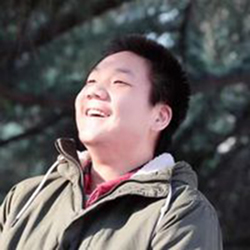
If a user sought to implement a version control system similar to GitHub, which allows for storage of multiple versions of the same data and retrieval of any version of a given file, one approach would be to store every version explicitly on the disk.
However, this method incurs a huge storage cost and requires a lot of repetition, thus such a system typically only explicitly stores a small number of versions and computes and retrieves data comparison differences on-the-fly. To minimize the overall storage cost and calculation time, Guo demonstrated empirically superior algorithms as an approach to the NP-hard optimization problem.
Richard Jo
Jo, a fourth-year student in computer science, presented “Leaving YouTube for a Peer - A First Characterization of PeerTube.”
PeerTube, an open-source video platform built as a decentralized alternative to YouTube, is part of a series of federated social network platforms – including Mastodon, Hubzilla, Diaspora, and Friendica – that have been built partially in response to growing concerns with centralized control and ownership of incumbent platforms such as Twitter, YouTube, and Facebook.
Jo characterized PeerTube – the content being shared, its popularity, and the underlying infrastructure. He discussed how PeerTube’s support for user-generated, long-form video presents a unique set of challenges among federated services, ranging from the model of replication used to ensure availability to the approach clients use for content download.
Peizhi Liu and Ruiqi (Jerry) Xu
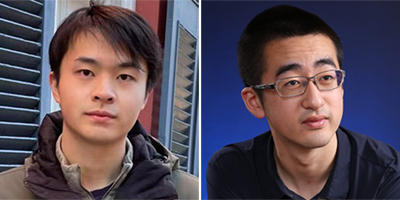
With the increasing versatility of the Graphics Processing Unit (GPU), researchers are taking advantage of the parallel architecture of the GPU across a wide range of scientific applications to improve computational run time. Liu and Xu examined the potential of using the GPU to reduce simulation time in the context of the hydrodynamic performance of journal bearings under dynamic load, which involves many homogeneous calculations and nested iterations.
The team explored the possibility of using the GPU to accelerate journal-bearing simulation in the presence of non-Newtonian fluids via a direct method to solve the Reynolds Equation. They presented optimizations based on the characteristics of the Compute Unified Device Architecture (CUDA) system, which includes tiling, reduction, memory coalescing, and bank conflict avoidance. Liu and Xu achieved a 7x speedup over a comparable serial Central Processing Unit (CPU) solver.
Liu and Xu are advised by Peter Dinda, professor of computer science and (by courtesy) electrical and computer engineering at Northwestern Engineering.
